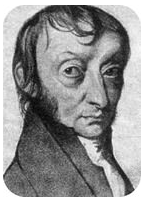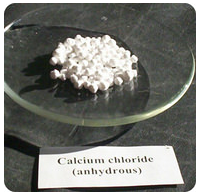2.4: The Mole and Molar Mass
- Page ID
- 152143
- Define mole and molar mass.
- Perform calculations to convert between moles and mass of a substance.
- Perform calculations to convert between mass of a substance and number of particles.
The Mole and Avogadro's Number
It certainly is easy to count bananas or to count elephants (as long as you stay out of their way). However, you would be counting grains of sugar from your sugar canister for a long, long time. Atoms and molecules are extremely small—far, far smaller than a grain of sugar. Counting atoms or molecules is not only unwise, it is absolutely impossible. One drop of water contains about \(10^{22}\) molecules of water. If you counted 10 molecules every second for 50 years without stopping, you would have counted only \(1.6 \times 10^{10}\) molecules. Put another way, at that counting rate, it would take you over 30 trillion years to count the water molecules in one tiny drop.
Chemists of the past needed a name that stood for a very large number of items. Amadeo Avogadro (1776-1856), an Italian scientist, provided such a number. He is responsible for the counting unit of measure called the mole. A mole \(\left( \text{mol} \right)\) is the amount of a substance that contains \(6.02 \times 10^{23}\) representative particles of that substance. The mole is the SI unit for amount of a substance. Just like the dozen and the gross, it is a name that stands for a number. There are therefore \(6.02 \times 10^{23}\) water molecules in a mole of water molecules. There also would be \(6.02 \times 10^{23}\) bananas in a mole of bananas—if such a huge number of bananas ever existed.

The number \(6.02 \times 10^{23}\) is called Avogadro's number, the number of representative particles in a mole. It is an experimentally determined number. A representative particle is the smallest unit in which a substance naturally exists. For the majority of elements, the representative particle is the atom. Iron, carbon, and helium consist of iron atoms, carbon atoms, and helium atoms, respectively. Seven elements exist in nature as diatomic molecules and they are \(\ce{H_2}\), \(\ce{N_2}\), \(\ce{O_2}\), \(\ce{F_2}\), \(\ce{Cl_2}\), \(\ce{Br_2}\), and \(\ce{I_2}\). The representative particle for these elements is the molecule. Likewise, all molecular compounds such as \(\ce{H_2O}\) and \(\ce{CO_2}\) exist as molecules, and so the molecule is their representative particle. For ionic compounds such as \(\ce{NaCl}\) and \(\ce{Ca(NO_3)_2}\), the representative particle is the formula unit. A mole of any substance contains Avogadro's number \(\left( 6.02 \times 10^{23} \right)\) of representative particles.

Converting Between Number of Atoms to Moles and Vice Versa
We can use Avogadro's number as a conversion factor, or ratio, in dimensional analysis problems. If we are given the number of atoms of an element X, we can convert it into moles by using the relationship
\[\text{1 mol X} = 6.022 \times 10^{23} \text{ X atoms} \nonumber \]
The element carbon exists in two primary forms: graphite and diamond. How many moles of carbon atoms is \(4.72 \times 10^{24}\) atoms of carbon?
Solution
| Steps for Problem Solving | The element carbon exists in two primary forms: graphite and diamond. How many moles of carbon atoms is \(4.72 \times 10^{24}\) atoms of carbon? |
|---|---|
| Identify the "given" information and what the problem is asking you to "find." | Given: \(4.72 \times 10^{24}\) C atoms Find: mol C |
| List other known quantities. | \(1\, mol = 6.022 \times 10^{23}\) C atoms |
| Prepare a concept map and use the proper conversion factor. | |
| Cancel units and calculate. | \[4.72 \times 10^{24} \: \cancel{\text{C} \: \ce{atoms}} \times \frac{1 \: \text{mol} \: \ce{C}}{6.02 \times 10^{23} \: \cancel{\text{C} \: \ce{atoms}}} = 7.84 \: \text{mol} \: \ce{C} \nonumber \] |
| Think about your result. | The given number of carbon atoms was greater than Avogadro's number, so the number of moles of \(\ce{C}\) atoms is greater than 1 mole. Since Avogadro's number is a measured quantity with three significant figures, the result of the calculation is rounded to three significant figures. |
Molar Mass
The molar mass of a substance is defined as the mass in grams of 1 mole of that substance. One mole of isotopically pure carbon-12 has a mass of 12 g. For an element, the molar mass is the mass of 1 mol of atoms of that element; for a covalent molecular compound, it is the mass of 1 mol of molecules of that compound; for an ionic compound, it is the mass of 1 mol of formula units. That is, the molar mass of a substance is the mass (in grams per mole) of 6.022 × 1023 atoms, molecules, or formula units of that substance. In each case, the number of grams in 1 mol is the same as the number of atomic mass units that describe the atomic mass, the molecular mass, or the formula mass, respectively.
The molar mass of any substance is its atomic mass, molecular mass, or formula mass in grams per mole.
The periodic table lists the atomic mass of carbon as 12.011 amu; the average molar mass of carbon—the mass of 6.022 × 1023 carbon atoms—is therefore 12.011 g/mol:
| Substance (formula) | Basic Unit | Atomic, Molecular, or Formula Mass (amu) | Molar Mass (g/mol) |
|---|---|---|---|
| carbon (C) | atom | 12.011 (atomic mass) | 12.011 |
| ethanol (C2H5OH) | molecule | 46.069 (molecular mass) | 46.069 |
| calcium phosphate [Ca3(PO4)2] | formula unit | 310.177 (formula mass) | 310.177 |
Converting Between Grams and Moles
The molar mass of any substance is the mass in grams of one mole of representative particles of that substance. The representative particles can be atoms, molecules, or formula units of ionic compounds. This relationship is frequently used in the laboratory. Suppose that for a certain experiment you need 3.00 moles of calcium chloride \(\left( \ce{CaCl_2} \right)\). Since calcium chloride is a solid, it would be convenient to use a balance to measure the mass that is needed. Dimensional analysis will allow you to calculate the mass of \(\ce{CaCl_2}\) that you should measure, as shown in Example \(\PageIndex{2}\).
Calculate the mass of 3.00 moles of calcium chloride (CaCl2).

Solution
| Steps for Problem Solving | Calculate the mass of 3.00 moles of calcium chloride (CaCl2). |
|---|---|
| Identify the "given" information and what the problem is asking you to "find." | Given: 3.00 moles of CaCl2 Find: g CaCl2 |
| List other known quantities. | 1 ml CaCl2 = 110.98 g CaCl2 |
| Prepare a concept map and use the proper conversion factor. | |
| Cancel units and calculate. | \(3.00 \: \cancel{\text{mol} \: \ce{CaCl_2}} \times \dfrac{110.98 \: \text{g} \: \ce{CaCl_2}}{1 \: \cancel{\text{mol} \: \ce{CaCl_2}}} = 333 \: \text{g} \: \ce{CaCl_2}\) |
| Think about your result. |
How many moles are present in 108 grams of water?
Solution
| Steps for Problem Solving | How many moles are present in 108 grams of water? |
|---|---|
| Identify the "given" information and what the problem is asking you to "find." | Given: 108 g H2O Find: mol H2O |
| List other known quantities. | \(1 \: \text{mol} \: \ce{H_2O} = 18.02 \: \text{g}\) H2O |
| Prepare a concept map and use the proper conversion factor. | |
| Cancel units and calculate. | \(108 \: \cancel{\text{g} \: \ce{H_2O}} \times \dfrac{1 \: \text{mol} \: \ce{H_2O}}{18.02 \: \cancel{\text{g} \: \ce{H_2O}}} = 5.99 \: \text{mol} \: \ce{H_2O}\) |
| Think about your result. |
What is the mass of \(7.50 \: \text{mol}\) of Nitrogen gas \(\ce{N2}\)?
- Answer:
- 210 g
Conversions Between Mass and Number of Particles
In "Conversions Between Moles and Mass", you learned how to convert back and forth between moles and the number of representative particles. Now you have seen how to convert back and forth between moles and mass of a substance in grams. We can combine the two types of problems into one. Mass and number of particles are both related to moles. To convert from mass to number of particles or vice-versa, it will first require a conversion to moles, as shown in Figure \(\PageIndex{1}\) and Example \(\PageIndex{4}\).
How many molecules is \(20.0 \: \text{g}\) of chlorine gas, \(\ce{Cl_2}\)?
Solution
| Steps for Problem Solving | How many molecules is \(20.0 \: \text{g}\) of chlorine gas, \(\ce{Cl_2}\)? |
|---|---|
| Identify the "given" information and what the problem is asking you to "find." | Given: 20.0 g Cl2 Find: # Cl2 molecules |
| List other known quantities. | 1 mol Cl2 = 70.90 g Cl2, 1mol Cl2 = 6.022 x 1023 Cl2 molecules |
| Prepare a concept map and use the proper conversion factor. |
|
| Cancel units and calculate. | \(20.0 \: \cancel{\text{g} \: \ce{Cl_2}} \times \dfrac{1 \: \cancel{\text{mol} \: \ce{Cl_2}}}{70.90 \: \cancel{\text{g} \: \ce{Cl_2}}} \times \dfrac{6.02 \times 10^{23} \: \text{molecules} \: \ce{Cl_2}}{1 \: \cancel{\text{mol} \: \ce{Cl_2}}} = 1.70 \times 10^{23} \: \text{molecules} \: \ce{Cl_2}\) |
| Think about your result. | Since the given mass is less than half of the molar mass of chlorine, the resulting number of molecules is less than half of Avogadro's number. |
How many formula units are in 25.0 g of CaCl2 ?
- Answer:
- 1.36 x 1023 CaCl2 formula units
Summary
- A mole of any substance contains Avogadro's number \(\left( 6.02 \times 10^{23} \right)\) of representative particles.
- The molar mass of a substance is defined as the mass in grams of 1 mole of that substance.
- Calculations involving conversions between moles of a material and the mass of that material are described.
- Calculations are illustrated for conversions between mass and number of particles.
Contributors and Attributions
Henry Agnew (UC Davis)

